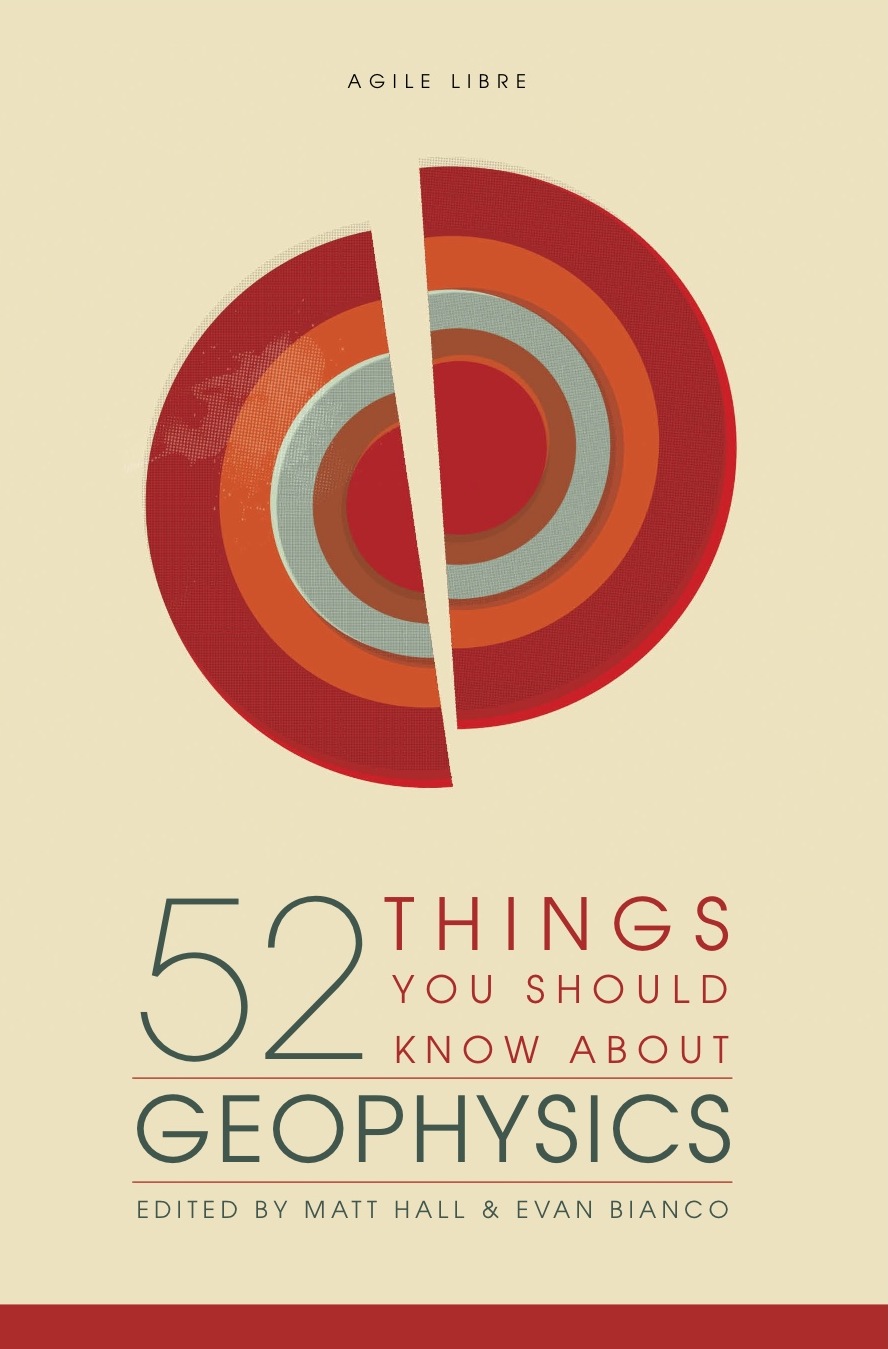What's inside? 52 things!
/ On Tuesday we announced our forthcoming community collaboration book. So what's in there? So much magic, it's hard to know where to start. Here's a list of the first dozen chapters:
On Tuesday we announced our forthcoming community collaboration book. So what's in there? So much magic, it's hard to know where to start. Here's a list of the first dozen chapters:
- Anisotropy is not going away, Vladimir Grechka, Shell
- Beware the interpretation-to-data trap, Evan Bianco, Agile
- Calibrate your intuition, Taras Gerya, ETH Zürich
- Don’t ignore seismic attenuation, Carl Reine, Nexen
- Don’t neglect your math, Brian Russell, Hampson-Russell
- Don’t rely on preconceived notions, Eric Andersen, Talisman
- Evolutionary understanding in seismic interpretation, Clare Bond, University of Aberdeen
- Explore the azimuths, David Gray, Nexen
- Five things I wish I’d known, Matt Hall, Agile
- Geology comes first, Chris Jackson, Imperial College London
- Geophysics is all around, José M Carcione, OGS Trieste, Italy
- How to assess a colourmap, Matteo Niccoli, MyCarta blog
- ...
When I read that list, I cannot wait to read the book — and I've read it three times already! This is not even one quarter of the book. You can guess from the list that some are technical, others are personal, a few may be controversial.
One thing we had fun with was organizing the contents. The chapters are, as you see, in alphabetical order. But each piece has thematic tags. Some were a little hard to classify, I admit, and some people will no doubt wonder why, say, Bill Goodway's The magic of Lamé is labeled 'basics', but there you go.
 One thing I did with the tags was try to group the chapters according to the tags they had. Each chapter has three tags. If we connect the three tags belonging to an individual chapter, and do the same for every chapter, then we can count the connections and draw a graph (right). I made this one in Gephi.
One thing I did with the tags was try to group the chapters according to the tags they had. Each chapter has three tags. If we connect the three tags belonging to an individual chapter, and do the same for every chapter, then we can count the connections and draw a graph (right). I made this one in Gephi.
The layout is automatic: relative positions are calculated by modeling the connections as springs whose stiffness depends on the number of links. Node size is a function of connectedness. Isn't it great that geology is in the middle?
Now, without worrying too much about the details, I used the graph to help group the chapters non-exclusively into the following themes:
- Fundamentals basics, mapping (16 chapters)
- Concepts geology, analogs (12 chapters)
- Interpretation needed a theme of its own (21 chapters)
- Power tools attributes, ninja skills (9 chapters)
- Pre-stack rock physics, pre-stack, processing (11 chapters)
- Quantitative mathematics, analysis (20 chapters)
- Integration teamwork, workflow (15 chapters)
- Innovation history, innovation, technology (9 chapters)
- Skills learning, career, managing (15 chapters)
I think this accurately reflects the variety in the book. Next post we'll have a look at the variety among the authors — perhaps it explains the breadth of themes.








 Except where noted, this content is licensed
Except where noted, this content is licensed